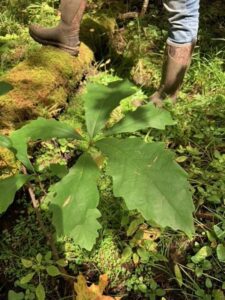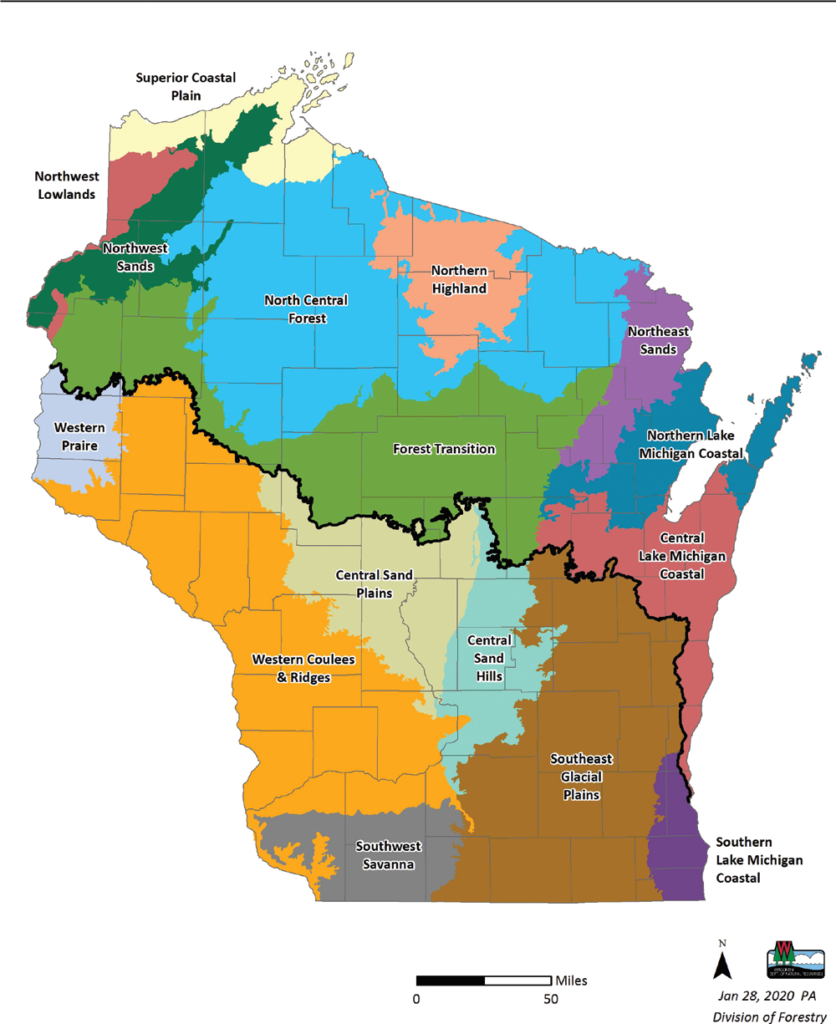The following was adapted from a Wisconsin Natural Resources magazine article.
By Colleen Matula, Wisconsin Department of Natural Resources (DNR) Forest Ecologist/Silviculturist and Patricia Alexandre, Former Forest Ecologist/Silviculturist
Wisconsin’s Forest Habitat Type Classification System (FHTCS) is an ecological classification tool developed in 1988 by John Kotar, a former scientist and instructor at UW-Madison. The FHTCS is based on repeatable patterns of forest understory plants present across similar sites.
Plant composition and growth are determined by site factors, including soils, topography, landform, hydrology and disturbance history. Together these factors represent the foundation of each unique habitat type.
Habitat typing helps foresters make decisions on the ground. This science-based tool can confidently predict how the forest will respond to different management treatments such as thinning, harvesting, and prescribed burning.
Each year in June, when understory plants are in bloom and easy to identify, new foresters from the Department of Natural Resources, county forests and other organizations receive two-day training on the habitat classification system. Continue reading “Seeing the Forest for More Than Just Trees”





 As the year draws to a close, we asked DNR urban forestry staff to reflect on the last 12 months and choose their top highlight – whether it’s a project they’re especially proud of, a new partnership or a deeper relationship with coworkers. Here are their responses:
As the year draws to a close, we asked DNR urban forestry staff to reflect on the last 12 months and choose their top highlight – whether it’s a project they’re especially proud of, a new partnership or a deeper relationship with coworkers. Here are their responses: Sunlight fades, then sunlight grows. With those celestial rhythms surrounding the winter solstice, millennia of ritual have been shaped. Winter is historically an extremely dangerous time, in a way unfathomable to those of us with furnaces and stocked pantries. But at the winter solstice, something important happens: ever so gradually, the days start to lengthen, and there is hope that a bright, warm world will return.
Sunlight fades, then sunlight grows. With those celestial rhythms surrounding the winter solstice, millennia of ritual have been shaped. Winter is historically an extremely dangerous time, in a way unfathomable to those of us with furnaces and stocked pantries. But at the winter solstice, something important happens: ever so gradually, the days start to lengthen, and there is hope that a bright, warm world will return. Join the Wisconsin Department of Natural Resources (DNR) and the Wisconsin Arborist Association for the 2022 Wisconsin Annual Urban Forestry Conference. The conference will be held on Feb. 20 – 22 at the KI Convention Center in Green Bay with select sessions available for attendance virtually.
Join the Wisconsin Department of Natural Resources (DNR) and the Wisconsin Arborist Association for the 2022 Wisconsin Annual Urban Forestry Conference. The conference will be held on Feb. 20 – 22 at the KI Convention Center in Green Bay with select sessions available for attendance virtually.